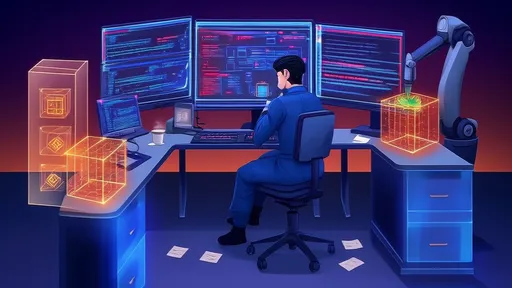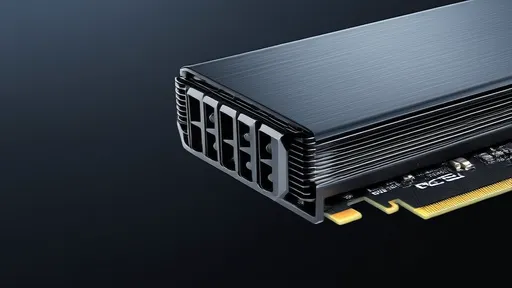The gaming industry has always been at the forefront of technological advancements, pushing hardware to its limits to deliver immersive experiences. One of the most critical aspects of modern gaming, especially in open-world titles, is loading speed. With the advent of PCIe 5.0 SSDs, the landscape of game loading times is undergoing a seismic shift. This new generation of storage technology promises to eliminate bottlenecks, reduce wait times, and fundamentally alter how developers design expansive virtual worlds.
The Evolution of Storage in Gaming
For years, gamers and developers alike have grappled with the limitations of traditional hard disk drives (HDDs) and even earlier solid-state drives (SSDs). While HDDs offered ample storage at a lower cost, their mechanical nature resulted in slower read and write speeds, leading to frustratingly long loading screens. The introduction of PCIe 3.0 and later PCIe 4.0 SSDs marked a significant improvement, but even these solutions couldn’t fully keep up with the demands of increasingly complex open-world games.
PCIe 5.0 SSDs represent the next leap forward. With double the bandwidth of PCIe 4.0, these drives can achieve sequential read speeds exceeding 12,000 MB/s, a figure that was unimaginable just a few years ago. This isn’t just about raw speed—it’s about how this technology enables developers to rethink asset streaming, level design, and even gameplay mechanics.
Breaking Down Open-World Loading Challenges
Open-world games are particularly demanding when it comes to storage performance. Titles like Cyberpunk 2077, Elden Ring, or Horizon Forbidden West feature vast, interconnected environments with high-resolution textures, detailed geometry, and complex physics systems. Traditionally, these games have relied on clever tricks like fog gates, elevators, or narrow corridors to mask loading times while the game pulls data from storage.
With PCIe 5.0 SSDs, these workarounds may become relics of the past. The near-instantaneous data transfer rates mean that assets can be loaded on the fly, eliminating the need for artificial barriers. Imagine traversing a sprawling cityscape without a single loading screen or entering a dense forest where every tree and blade of grass renders seamlessly as you move. This isn’t just a quality-of-life improvement—it’s a paradigm shift in how open-world games are constructed.
The Developer’s Perspective: New Possibilities
From a development standpoint, PCIe 5.0 SSDs open up exciting possibilities. Game engines can now stream assets in real-time with minimal latency, allowing for more dynamic environments. For instance, weather systems could change instantaneously, or entire sections of a map could be altered without interrupting gameplay. This level of flexibility was previously unattainable due to storage bottlenecks.
Moreover, the reduced loading times enable developers to experiment with non-linear storytelling. Players could jump between vastly different locations without breaking immersion, creating a more fluid narrative experience. This could lead to entirely new genres or gameplay mechanics that leverage the near-instantaneous data access provided by PCIe 5.0 SSDs.
Real-World Performance: What Gamers Can Expect
While the theoretical benefits of PCIe 5.0 SSDs are clear, real-world performance gains depend on how well games are optimized to take advantage of this technology. Early adopters of PCIe 5.0 SSDs in gaming PCs have reported dramatic reductions in loading times. For example, a game that previously took 30 seconds to load on a PCIe 4.0 SSD might now load in under 10 seconds with a PCIe 5.0 drive.
However, the full potential of PCIe 5.0 SSDs will only be realized when developers start designing games specifically for this hardware. Upcoming titles built with DirectStorage API support, such as those leveraging Microsoft’s Velocity Architecture, are expected to showcase what PCIe 5.0 SSDs can truly achieve. These games will likely feature larger, more detailed worlds with virtually no loading screens, setting a new standard for immersion.
Challenges and Considerations
Despite the promise of PCIe 5.0 SSDs, there are hurdles to widespread adoption. The first is cost—PCIe 5.0 SSDs are currently more expensive than their predecessors, putting them out of reach for budget-conscious gamers. Additionally, the technology generates more heat, requiring robust cooling solutions to maintain optimal performance.
Another consideration is backward compatibility. While PCIe 5.0 SSDs are backward compatible with older PCIe slots, they won’t perform at their full potential unless paired with a compatible motherboard and CPU. This means gamers looking to upgrade will need to invest in a holistic system overhaul to reap the benefits.
The Future of Gaming Storage
As PCIe 5.0 SSDs become more mainstream, their impact on open-world gaming will only grow. We’re likely to see a divide between games designed for older storage technologies and those built from the ground up for PCIe 5.0. The latter could feature unprecedented levels of detail and interactivity, blurring the line between pre-rendered cutscenes and live gameplay.
In the long run, PCIe 5.0 SSDs may also influence console design. The PlayStation 5 and Xbox Series X already leverage custom SSD solutions to reduce loading times, but future iterations could incorporate PCIe 5.0 technology to push boundaries even further. This would ensure that console gamers aren’t left behind in the race for seamless open-world experiences.
Conclusion
PCIe 5.0 SSDs are more than just incremental upgrades—they represent a fundamental shift in how games are designed and experienced. For open-world titles, the implications are profound: faster loading, richer environments, and new gameplay possibilities. While challenges remain, the trajectory is clear. The era of waiting for games to load is coming to an end, and the future of gaming has never looked brighter.

By /Jul 29, 2025

By /Jul 29, 2025

By /Jul 29, 2025

By /Jul 29, 2025

By /Jul 29, 2025

By /Jul 29, 2025

By /Jul 29, 2025

By /Jul 29, 2025

By /Jul 29, 2025

By /Jul 29, 2025

By /Jul 29, 2025

By /Jul 29, 2025

By /Jul 29, 2025

By /Jul 29, 2025

By /Jul 29, 2025

By /Jul 29, 2025

By /Jul 29, 2025

By /Jul 29, 2025

By /Jul 29, 2025

By /Jul 29, 2025